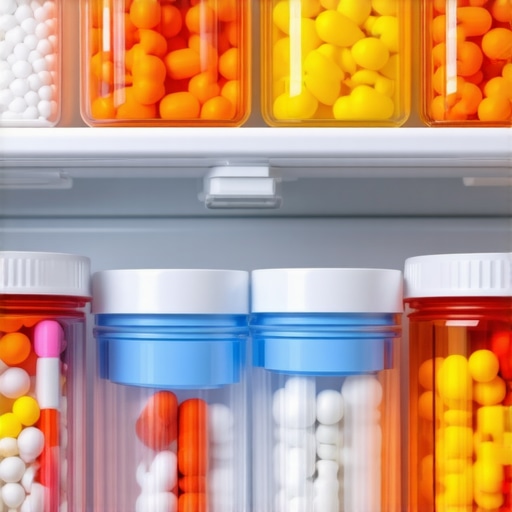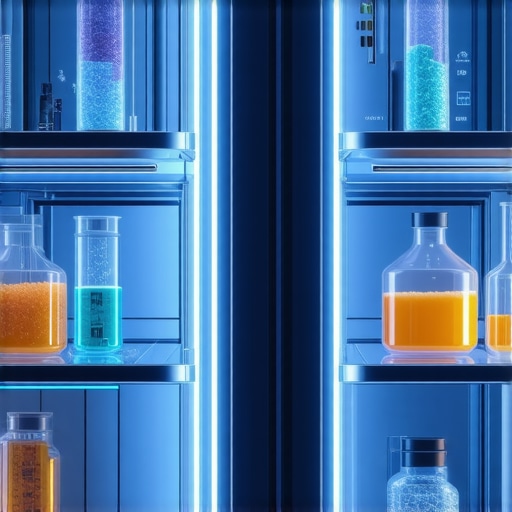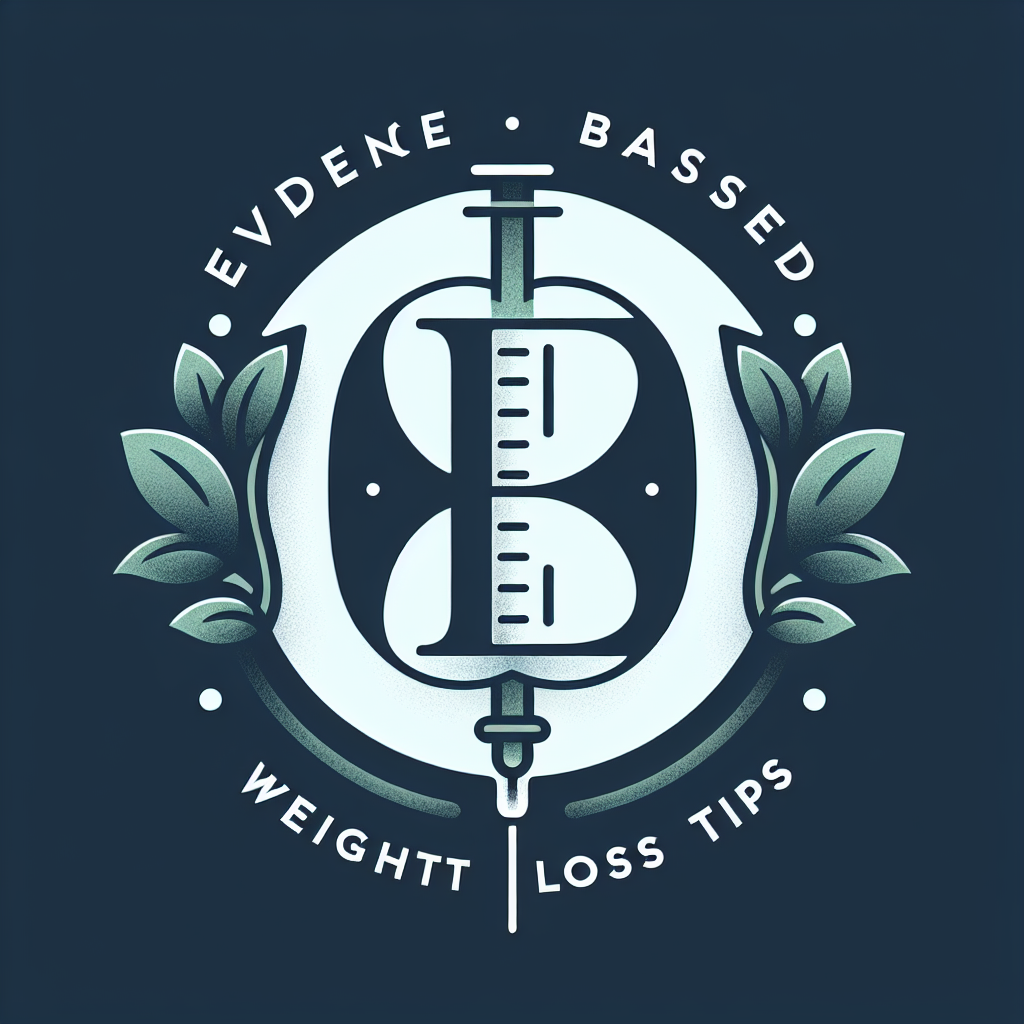Unveiling the Secrets to Safe Prescription Management: Your New Best Friends, Semaglutide and Tirzepatide
Imagine this: you’ve just started your journey with groundbreaking medications like semaglutide and tirzepatide. Exciting, right? But hold on—before you dive headfirst into the world of injectable weight-loss miracles, let’s talk about the art of handling and storing these prescription powerhouses safely. Because, trust me, even the most potent drugs need a little TLC to keep their magic alive.
Why does proper handling of these meds matter? Spoiler: It’s not just about keeping your fridge tidy
Handling prescription injectables isn’t rocket science, but it’s definitely a science—your science. Proper storage ensures medication efficacy, prevents contamination, and keeps your health on the right track. Think of it as giving your medication a VIP treatment—after all, they are the stars of your weight-loss saga. From temperature control to avoiding sunlight, every detail counts in maintaining their potency and safety.
The ABCs of Storage: Keep it cool, calm, and collected
Is your fridge the new VIP lounge for your medications?
Absolutely! Semaglutide and tirzepatide are best stored in the refrigerator at 2°C to 8°C (36°F to 46°F). But don’t toss them in the back like last week’s leftovers. Place them in the main compartment, away from the freezer and door, where temperature fluctuations are minimal. This careful placement ensures each dose remains as effective as the first.
And what about traveling? Well, packing these meds in an insulated bag with a cold pack is the way to go. Just don’t forget to check the temperature periodically—after all, no one wants their miracle drug to turn into a dud halfway through their journey.
Keeping it safe: Avoid common pitfalls that sabotage your treatment
Ever heard the phrase “out of sight, out of mind”? Well, that applies to medication storage too. Keep your prescriptions away from heat, humidity, and direct sunlight. These elements can degrade the active ingredients, rendering your treatment less effective. Also, always check the expiration date—because using expired meds is like trying to start a car with old fuel: disaster waiting to happen.
Handling with care: The art of injection prep and storage
Before injecting, ensure your hands are clean—no exceptions. Store your pens or vials upright to prevent leaks or contamination. And if you’re using multi-dose pens, don’t forget to clean the tip before each use. It’s a simple step that can prevent nasty infections and ensure your medication’s integrity.
Can you really trust your fridge to keep your meds safe?
Absolutely, but only if you maintain a consistent temperature and avoid frequent door openings. Regularly inspect your storage environment, and if you notice any changes in color, clarity, or smell of your medication, consult your healthcare provider immediately. Better safe than sorry, especially when your health depends on it.
In the end, managing your prescription injections with care isn’t just about following rules; it’s about respecting your body’s investment in this treatment. For a more detailed guide, check out best practices for handling and storing injections.
So, what’s your take? Do you have your own tips for keeping medications safe? Drop a comment below—let’s share the wealth of knowledge!
Remember, for personalized advice, always consult your healthcare provider, and stay informed with trusted sources like the FDA to keep your weight-loss journey safe and effective.
Are You Overlooking the Hidden Keys to Medication Efficacy? The Critical Role of Proper Handling and Storage
When embarking on a journey with potent weight-loss medications like semaglutide and tirzepatide, many focus solely on diet and exercise. But the real magic hinges on how well you manage the integrity of these medications. Proper handling and storage are not just routine chores—they are essential for ensuring your treatment remains effective and safe. Have you considered how your storage practices might be sabotaging your progress? The answer could be closer than you think.
Is Your Refrigerator the Right Home for Your Weight-Loss Medications?
Absolutely. Semaglutide and tirzepatide require a consistent, cool environment—ideally between 2°C and 8°C (36°F to 46°F)—to maintain their potency. Placing them in the main compartment of your fridge, away from the freezer and door, shields them from temperature fluctuations. Think of your medications like delicate plants that flourish only with stable conditions. Proper storage prevents degradation of active ingredients, which is crucial for sustained weight-loss results. For travel, packing in an insulated bag with cold packs and monitoring the temperature ensures your meds stay effective on the go. Remember, a well-preserved medication is a cornerstone of successful weight management.
Have you checked your storage setup lately? If not, it might be time for a quick audit to ensure optimal efficacy and safety.

What Are the Common Pitfalls That Could Derail Your Weight-Loss Journey?
Many users unknowingly fall into traps that compromise their treatment. Exposing medications to heat, humidity, or sunlight can accelerate breakdown, reducing effectiveness. Also, neglecting expiration dates is a risk—using expired meds is akin to trying to power your car with old fuel, risking engine failure. Keeping your medications in a cool, dry, and dark place, with regular checks, safeguards your investment in health. Additionally, handling your injections with clean hands, storing pens upright, and cleaning tips before use can prevent infections and ensure consistent dosing.
Can Proper Storage Really Make That Much Difference?
Yes, it can. The differences in outcomes between well-handled medications and those neglected are significant. Proper storage preserves the stability of active ingredients, ensuring you receive the full benefit of your treatment. Even minor lapses—like leaving medication in a hot car or in direct sunlight—can diminish potency. For detailed guidance, consult resources like best practices for handling and storing injections.
Interested in more expert tips? Sharing your own storage hacks or questions in the comments can help foster a community focused on safe and effective weight management. Remember, staying informed and vigilant is your best strategy for long-term success.
For personalized advice and ongoing support, always consult your healthcare provider. And stay updated with trusted sources such as the FDA, which provides the latest guidelines on medication safety and use.
Advanced Techniques for Maintaining Medication Integrity: Beyond Basic Storage Principles
When delving into the nuances of prescription medication management, especially for high-stakes drugs like semaglutide and tirzepatide, it’s imperative to recognize that optimal storage extends into sophisticated territory. Ensuring the stability of these peptides involves understanding their biochemical vulnerabilities—particularly to temperature fluctuations, light exposure, and humidity—and implementing proactive strategies to mitigate degradation risks.
What Are the Biochemical Weak Points of GLP-1 Receptor Agonists and GIP-GLP-1 Agonists?
Semaglutide and tirzepatide are peptide-based medications susceptible to hydrolysis and oxidation. These processes accelerate when environmental conditions deviate from manufacturer specifications, leading to a reduction in potency. According to a 2022 study in the Journal of Pharmaceutical Sciences, peptide stability is highly sensitive to temperature and pH variations, emphasizing the importance of maintaining a narrow environmental window. Proper storage isn’t merely about adherence to guidelines; it’s about preserving molecular integrity to guarantee therapeutic efficacy over the product’s shelf life.
External factors, such as light—particularly UV radiation—can catalyze oxidative reactions. Therefore, storing medications in opaque, UV-protective packaging or containers is critical for preventing degradation. Additionally, humidity can promote hydrolytic reactions; thus, maintaining a dry storage environment is equally essential.
How Can You Implement Advanced Storage Solutions for Maximum Efficacy?
For the dedicated health-conscious individual, investing in precision temperature control devices can be transformative. Commercially available **smart refrigerators** with built-in temperature sensors and data logging capabilities provide real-time feedback, ensuring the medication remains within the 2°C to 8°C (36°F to 46°F) range. These devices can alert you immediately if temperature deviations occur, preventing inadvertent damage.
Moreover, consider using **vacuum-sealed, lightproof storage containers** designed explicitly for peptides. These containers minimize oxidative and photolytic exposure, particularly during travel or in non-permanent storage environments. When traveling, the use of **phase change cold packs** combined with insulated cases ensures temperature stability without excessive freezing, which could damage the medication.
To further optimize, incorporate **environmental monitoring systems** that log temperature, humidity, and light exposure over time, providing detailed data for quality assurance and regulatory compliance—especially pertinent for clinical or research settings.
Is There a Role for Emerging Technologies in Storage and Handling?
Yes. Advances in nanotechnology and smart packaging are beginning to influence medication storage. Researchers are exploring **nanoparticle-based stabilizers** that can be integrated into packaging to prevent oxidation and hydrolysis. Similarly, **biosensors** capable of detecting early signs of peptide degradation could revolutionize how patients and providers monitor medication quality remotely, ensuring that only potent, effective doses are administered.
For those eager to explore cutting-edge solutions, engaging with pharmaceutical innovation forums and professional networks can provide insights into emerging tools designed to safeguard peptide stability in real-world settings. Staying informed about such developments empowers you to make smarter choices and advocate for higher standards in medication management.
In summary, meticulous storage and handling of semaglutide and tirzepatide are non-negotiable for maximizing therapeutic benefits. As our understanding of peptide stability deepens, integrating advanced storage solutions becomes a proactive step toward ensuring your weight-loss journey remains safe and effective.
Interested in learning more about the latest in pharmaceutical storage technology? Reach out to your healthcare provider or subscribe to industry updates for the most current innovations. Your health deserves nothing less than the best in medication preservation.
Unlocking the Biochemical Stability of GLP-1 and GIP-GLP-1 Agonists: A Deep Dive into Advanced Storage Strategies
Understanding the biochemical vulnerabilities of medications like semaglutide and tirzepatide is crucial for maintaining their efficacy over time. These peptides are susceptible to hydrolysis, oxidation, and photodegradation—processes that accelerate when environmental conditions deviate from manufacturer specifications. To mitigate these risks, it’s vital to implement proactive storage measures that preserve molecular integrity and therapeutic potency.
What Are the Specific Molecular Weak Points That Demand Vigilant Storage?
Peptide-based medications are particularly vulnerable to hydrolytic cleavage and oxidative stress. Hydrolysis occurs when water molecules attack peptide bonds, especially under elevated humidity or pH fluctuations, leading to diminished activity. Oxidation, often catalyzed by UV light and oxygen exposure, can alter amino acid residues, compromising drug stability. A 2022 study in the Journal of Pharmaceutical Sciences highlights that maintaining a strictly controlled environment—low humidity, minimal light exposure, and stable pH—is essential for longevity. Regularly inspecting storage environments and employing protective packaging are practical steps to safeguard these delicate molecules.
How Can Cutting-Edge Storage Technologies Elevate Medication Preservation?
For the dedicated user seeking to maximize efficacy, integrating sophisticated storage solutions is transformative. Smart refrigerators equipped with precision temperature sensors and real-time data logging provide unparalleled oversight. These devices instantly alert you to deviations, preventing inadvertent damage. Additionally, employing vacuum-sealed, lightproof containers minimizes oxidative and photolytic reactions, especially during travel or in non-permanent storage settings. Combining these with environmental monitoring systems that log humidity, temperature, and light exposure ensures comprehensive control over medication integrity.

Emerging nanotechnologies are promising future solutions, with nanoparticle stabilizers and biosensors being developed to detect early signs of peptide degradation, offering real-time quality assurance and remote monitoring capabilities.
Are There Practical Steps to Implement These Innovations in Daily Routine?
Yes. Incorporating precision-controlled storage units, such as smart refrigerators, and utilizing lightproof, vacuum-sealed containers during travel are immediate measures. Additionally, maintaining a detailed log of storage conditions, temperature, and humidity—either manually or via automated sensors—can help prevent degradation. These practices, combined with regular inspection and prompt action if abnormalities are detected, form the backbone of advanced medication management.
Stay informed about emerging storage technologies by engaging with pharmaceutical innovation forums and subscribing to updates from industry leaders. As research progresses, integrating these cutting-edge solutions becomes increasingly accessible and vital for ensuring your treatment remains both safe and effective.
Remember, safeguarding your medications at the molecular level is not just a technical concern but a personal commitment to your health. For tailored advice, always consult your healthcare provider and leverage trusted resources like the FDA guidelines on drug storage and handling.
Expert Insights & Advanced Considerations
1. Peptide Stability and Environmental Control
Understanding the biochemical vulnerabilities of semaglutide and tirzepatide is crucial. These peptides are highly susceptible to hydrolysis, oxidation, and photodegradation, which can significantly diminish their efficacy. Implementing controlled storage environments—maintaining strict temperature, humidity, and light exposure parameters—ensures molecular integrity and long-term potency.
2. Innovative Storage Technologies
Utilizing smart refrigeration units with real-time monitoring, vacuum-sealed, lightproof containers, and environmental data logging can elevate medication preservation standards. These measures help prevent degradation during storage and travel, safeguarding therapeutic effectiveness over time.
3. Handling Best Practices to Minimize Risks
Proper injection preparation involves meticulous hand hygiene, correct vial or pen storage upright, and tip disinfection. Regular inspection of medication for changes in appearance, smell, or clarity, coupled with adherence to expiration dates, prevents compromised treatment and adverse effects.
4. Emerging Scientific Innovations
Advances in nanotechnology, biosensors, and nanoparticle stabilizers are on the horizon, promising enhanced peptide stability and remote monitoring capabilities. Staying informed about these developments can provide valuable tools for clinicians and patients committed to optimizing treatment outcomes.
Curated Expert Resources
- FDA Guidelines on Medication Storage: Provides authoritative standards for pharmaceutical storage and handling, essential for compliance and safety.
- Journal of Pharmaceutical Sciences: Offers cutting-edge research on peptide stability, degradation pathways, and advanced preservation techniques.
- Pharmaceutical Technology Magazine: Features industry innovations in smart packaging, storage solutions, and nanotechnologies aimed at medication stability.
Final Expert Perspective
In the realm of weight-loss pharmacotherapy, meticulous handling and storage of medications like semaglutide and tirzepatide are not mere formalities but pivotal to achieving sustained, safe results. As scientific understanding deepens and technology advances, integrating these innovations into daily practice can markedly enhance treatment efficacy. For healthcare professionals and patients alike, embracing an expert approach—grounded in biochemical insights and technological tools—ensures that these potent medications deliver their full promise. Engage actively with ongoing research, consult trusted resources, and never underestimate the power of proper storage and handling in your weight management journey. Your commitment to excellence today paves the way for long-term success tomorrow.
